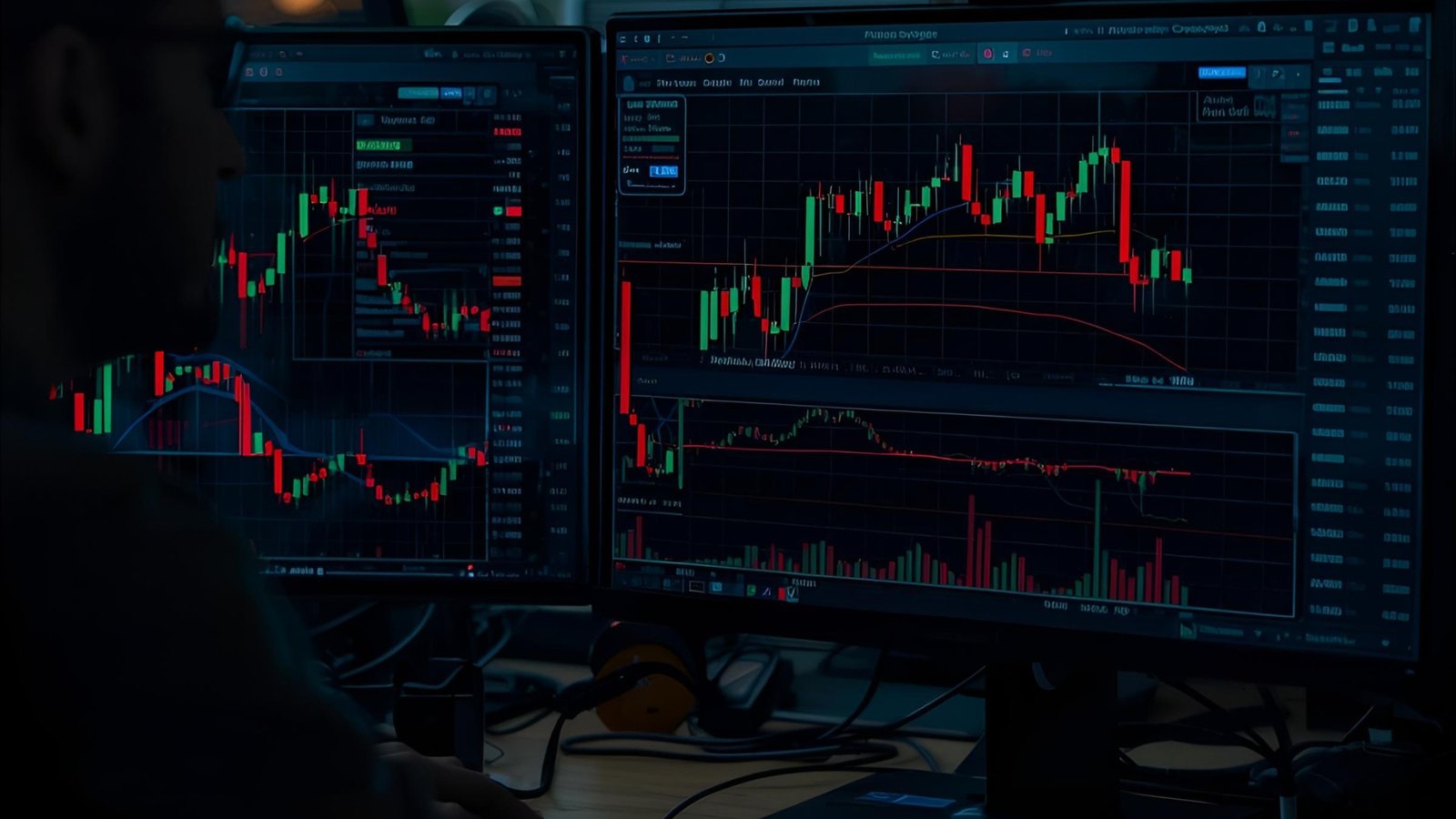The Bitcoin price spikes climbed to a fresh two-month high as the US government shutdown unsettled traditional markets and redirected investor attention toward digital gold. In the opening days of October, news of furloughed federal workers, stalled data releases, and broader uncertainty pushed traders to reprice risk. Crypto markets responded quickly. Multiple outlets reported BTC breaking above the $120,000 mark for the first time since August, while exchange-traded fund demand and derivatives positioning signalled growing momentum.
At the same time, the shutdown’s economic ripple effects became a headline risk of their own. Analysts warned of billions in weekly losses to US output and reduced market confidence if the impasse persisted, amplifying the appeal of perceived hedges like Bitcoin price spikes.In parallel, the shutdown strained critical government functions, including cybersecurity operations, adding another layer of macro uncertainty to the narrative underpinning crypto strength.
This article unpacks the forces behind Bitcoin’s rally, explains the interplay between a government shutdown and BTC price action, and outlines what to watch next—from ETF flows and on-chain health to macro catalysts and risk management.
Why a US shutdown can be a tailwind for Bitcoin
A US federal shutdown can shake investor confidence in the smooth functioning of the world’s largest economy. When appropriations lapse, agencies furlough staff, data releases get delayed, and certain regulatory processes pause. That interruption can become a macro shock: it muddies visibility for traders who rely on timely data to handicap interest-rate paths, growth, and inflation. In such windows of uncertainty, store-of-value narratives often gain traction—and Bitcoin, long branded as “digital gold,” tends to attract inflows.
In the current episode, coverage highlighted how BTC pushed above $120,000 while the shutdown dominated headlines, with traders also betting on a seasonally strong October. The confluence—political risk, potential policy delays, and hopes for easier financial conditions—created fertile ground for a crypto rebound.
Meanwhile, the economic costs of a prolonged funding lapse, estimated in the billions per week by private forecasters and government economists alike, have reinforced a familiar hedge dynamic: as the US dollar outlook and Treasury market wobble at the margins, Bitcoin can look like an alternative allocation with asymmetric upside if the crisis resolves and risk sentiment improves.
The mechanics behind the move: ETFs, liquidity, and futures
One difference between this cycle and prior shutdowns is the presence of deep, persistent spot Bitcoin ETF demand. Inflows have been a structural buyer of BTC throughout 2025, lifting liquidity and helping absorb sell-side supply. Reports during the shutdown indicated renewed interest in BTC ETFs alongside the price breakout—consistent with investors treating ETF shares as a convenient on-ramp during macro stress.
Derivatives markets have echoed the momentum. Coverage noted record-high futures open interest, a sign that speculative capital is also leaning into the move, whether as outright longs or basis trades that arbitrage ETF and futures pricing. Elevated OI can supercharge rallies when they start, but it can also intensify pullbacks if funding turns expensive or if a macro headline flips sentiment and triggers de-risking.
In short, liquidity begets volatility. ETFs supply steady demand; futures add leverage and speed. Together, they can pull Bitcoin price spikes through resistance faster than spot flows alone—particularly when a macro shock scrambles correlations.
Shutdown effects beyond markets data delays and policy drift

One under-appreciated channel through which shutdowns impact crypto is the data calendar. If key economic releases are delayed—nonfarm payrolls, CPI components, or other series—traders lose signposts the Federal Reserve typically watches. That raises uncertainty around rate-cut timing and term-premium dynamics. Coverage this week explicitly tied the shutdown risk to volatility in assets that trade on the policy path, including Bitcoin, which has become more rates-sensitive as institutional participation has grown.
There are also operational knock-ons. A shutdown can pause or slow some regulatory reviews, adding ambiguity for issuers and market makers. Even when crypto-specific processes are not directly halted, a thinner public-sector apparatus reduces the cadence of guidance. At the same time, cybersecurity capacity constraints during a shutdown heighten perceived tail risks in critical infrastructure, keeping the market on edge.
Safe-haven or risk asset? The nuanced role of Bitcoin
Is Bitcoin a hedge, a high-beta risk asset, or both? The answer depends on the lens and timeframe. Over intraday horizons, BTC often trades like a risk asset, moving with equities when liquidity expands and yields fall. Over macro stress regimes, the narrative can pivot: the scarcity encoded in Bitcoin’s supply schedule, its independence from government balance sheets, and its global, always-on markets can make it behave more like a safe-haven.
This dual identity was on display as the shutdown progressed. Headlines framed BTC’s push above $120,000 alongside safe-haven interest in gold, even as traders simultaneously priced a “bullish October” risk-on tone. In practice, both can be true: investors rotate into BTC as a hedge against policy dysfunction while also positioning for a rally if the policy fog clears and rates ease.
Technical picture: why the two-month high matters
Chart levels matter because they shape behavior. Clearing a two-month range top typically flips market structure from distribution to accumulation, inviting trend followers, momentum systems, and discretionary traders who buy breakouts. When that breakout coincides with a macro narrative—here, the shutdown and a possible pivot in the policy cycle—the move can gather reflexive energy.
Derivatives context is critical. With open interest elevated and funding rates rising, pullbacks can be sharp as late longs get washed out. But if spot demand from ETFs and large holders underpins the market, dips can be shallow and quickly retraced. Reports of record futures OI and sustained ETF inflows during the move support the idea that the breakout had both speculative and structural sponsorship.
Also Read: Federal Crackdown Reshapes Bitcoin Mining in Texas
On-chain and flows signals to watch after the breakout

Beyond price, several on-chain metrics and flow indicators help validate a trend:
Exchange balances and realized profit-taking
Falling exchange balances generally imply net accumulation and less immediate sell pressure. After a two-month breakout, watch whether long-dormant coins move to exchanges—an early sign of profit-taking—or whether balances keep shrinking, which would suggest conviction among holders.
Short-term holder profitability and SOPR
When the Spent Output Profit Ratio (SOPR) for short-term holders flips above 1.0 and stays there, it indicates the market is realizing profits without derailing the trend, a classic bull-market signature. During the run-up into the shutdown headlines, several analysts pointed to improving SOPR-style dynamics that mirror constructive setups from earlier in the year.
ETF primary/secondary market dynamics
Large creations in spot ETFs can outrun on-screen exchange volumes, absorbing supply from market makers and pushing prices up across venues. Coverage of mid-week inflows as BTC reclaimed five-figure gains aligns with that mechanism and remains a key pillar to monitor.
Macro cross-currents: rates, the dollar, and recession risk
Even as the shutdown dominates the tape, core macro drivers still matter:
Interest-rate expectations
If delayed data muddles the Fed’s view, markets may lean into cuts on the assumption that growth will slow under the fiscal drag of a shutdown. Lower rate expectations tend to support risk assets and duration-sensitive trades like BTC. Conversely, any upside surprise in inflation once data resumes could stall the rally.
The US dollar and real yields
Softer real yields and a stable or weaker USD typically correlate with Bitcoin price strength. Shutdown-related uncertainty can reduce confidence in the fiscal path, nudging yields and the dollar lower at the margin, although this relationship can whipsaw on headline risk.
Recession probabilities
If the shutdown extends and consumer confidence drops, recession probabilities could climb. That scenario is ambiguous for BTC: on one hand, capital seeks alternatives; on the other, deleveraging can hit all risk assets at once. Analysts’ warnings about sizable weekly GDP losses underscore why duration matters.
Risks to the bullish thesis
No rally is linear. Traders should keep several risks in view:
Swift resolution of the shutdown
An unexpectedly rapid deal could remove the safe-haven bid and re-center markets on fundamentals. If upcoming data prints strong, the market could push out rate-cut timelines, tightening financial conditions and cooling crypto enthusiasm.
Regulatory bottlenecks and delays
Shutdowns can slow some parts of the regulatory machinery. While spot Bitcoin ETFs are already live, new product approvals or routine interactions may lag, creating pockets of uncertainty for market structure and liquidity provision. This is not inherently bearish but can sap momentum at the edges.
Leverage and crowded positioning
Record open interest cuts both ways. If funding gets stretched or if a negative headline sparks de-risking, the resulting long liquidations can produce fast, demoralizing drawdowns. The same leverage that propels breakouts can magnify corrections.
Strategy takeaways for investors
For long-term allocators, the shutdown episode reinforces Bitcoin’s role as a portfolio diversifier that can respond to macro and policy shocks in ways distinct from equities and bonds. Dollar-cost averaging remains a sensible approach in volatile regimes. For traders, the playbook is more tactical: respect the breakout above the two-month range, monitor ETF flow, funding, and on-chain heat, and keep risk controls tight in case the headline cycle flips or an over-levered market needs to reset.
Finally, remember that Bitcoin can be both a safe-haven narrative asset and a high-beta macro instrument—sometimes simultaneously. Understanding that duality is key to navigating what comes next as Washington works through the shutdown and markets adapt.
Outlook What would sustain the rally
Three pillars would help sustain the move:
Continued ETF inflows
As long as spot ETF creations remain positive, structural demand should buffer dips and support higher Bitcoin prices over time. Coverage this week suggests that dynamic remains intact during the shutdown window.
Macro confirmation
Easing financial conditions—whether through softer data once releases resume or clearer guidance from policymakers—would reinforce the case for risk assets and support crypto beta.
Clean on-chain signals
A pattern of higher lows in exchange balances, healthy SOPR readings, and resilient hash rate would indicate that network fundamentals are tracking price, not chasing it. Combined with disciplined leverage in futures, that would set the stage for a steadier advance.
Conclusion
The Bitcoin price spikes to a two-month high during the US government shutdown is a reminder of how quickly macro ruptures can rewire market narratives. With ETFs funnelling steady demand, derivatives amplifying momentum, and uncertainty boosting the appeal of digital gold, BTC found the catalysts it needed to break out of a late-summer range.
Yet the same forces that lifted the market—headline risk, leverage, data fog—can also inject turbulence. Whether this move matures into a sustained trend will depend on the shutdown’s duration, the trajectory of rates and the dollar, and the persistence of institutional flows. For now, the path of least resistance leans higher—but with volatility as a constant companion.
FAQs
Did the shutdown directly cause Bitcoin to rally?
Not directly. A shutdown doesn’t change Bitcoin’s code or issuance. What it does is tilt risk appetite and narratives. By disrupting data and raising uncertainty, it nudges investors toward hedges and alternative assets, which can increase BTC demand.
How important are ETFs to the current move?
Very. Spot Bitcoin ETFs have become a structural buyer. Coverage during the shutdown highlighted renewed inflows and deeper liquidity, helping power the breakout and absorb profit-taking on dips.
Could a quick shutdown resolution hurt the rally?
It could cool the safe-haven impulse and refocus traders on upcoming data and the Fed path. If that leads to higher yields or a stronger USD, it might cap upside in the short term, though ETF demand could still provide a floor.
What risks could reverse gains?
Over-levered futures positioning, a hawkish shift in rate expectations once data resumes, or negative regulatory headlines could all spark rapid drawdowns. Elevated open interest means both rallies and pullbacks can accelerate.
How can investors navigate the volatility?
Long-term participants often prefer incremental allocation and a focus on security and custody. Active traders should watch funding, OI, ETF flow, and on-chain signals, and use disciplined risk limits around key technical levels.

